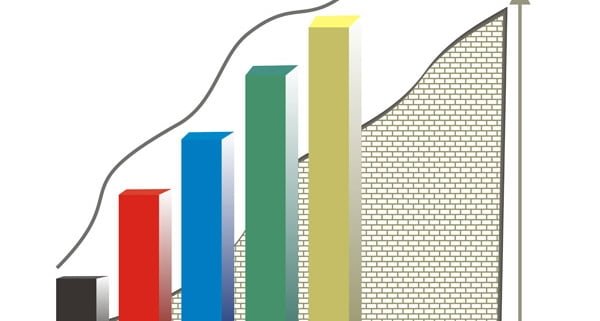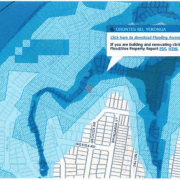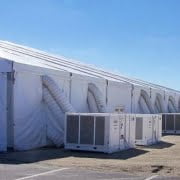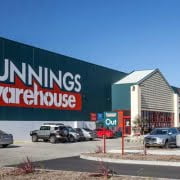In my opinion Depreciation is the secret sauce when selecting retail shops as our wealth building engine. Our wealth building strategy is to create a long lasting income stream that is indexed to inflation and tax effective.
The Australian Government allows you to depreciate the construction cost of your building at 2.5% per year if the shop or centre was constructed after the 20th July 1982. In the book Engines of Wealth we provide examples of shop purchases valued around $450,000, for such a shop the approximate cost of construction would be $200,000. Hence, at 2.5% depreciation per year that is $5,000 you are allowed as an annual depreciation claim against your income. In short, as the shop asset depreciates in value the Tax office permits you to reduce your taxable income by this depreciation amount. If for example, the building was 5 years old when you bought it, then for the next 35 years you can claim this $5,000 annual depreciation benefit.
Depreciation is a benefit for any investor when buying a Commercial Retail Shop or any investment property for that matter. The younger the building the longer the depreciation benefits can be claimed. The property’s age and hence depreciation schedule is a key consideration when buying your investment property.
I believe deprecation is a great advantage to the property investor in fact it’s so good previous Governments tried to abolish it. For a brief period from 1984 to 1986 the Hawke government did indeed abolish depreciation. So if your building happens to have been constructed during this brief period in history then no depreciation benefits can be claimed. Unfortunately for me I found that out the hard way, one of the shops I purchased was in fact built in 1984, so you can imagine my disappointment when my accountant told me the news “no depreciation on that building”, ouch.
As part of due diligence you should ask the real estate agent if the vendor selling the property has a depreciation schedule. It is surprising to me how many times owners do not have this schedule and are missing out on this tax advantage. In the event that a depreciation schedule is not available and the building is constructed after the 20th July 1982 you will need to have one generated prior to your next tax return. Your accountant will need this depreciation schedule to complete your return and ensure you get your full depreciation entitlement.
There are several companies that prepare depreciation schedules and it pays to shop around for a competitively priced report. Just recently I used BMT Tax Depreciation Quantity Surveyors to complete a depreciation report. BMT like many other Quantity Surveyors are registered tax agents and the reports they produce are widely accepted by the Australian Tax Office and operate within the Tax Commissioners interpretations of the Taxation Act 2009.
Quantity Surveyors leverage published construction cost databases, no matter what year your property was constructed they have the data and ability to estimate construction cost. Where information about your buildings construction and fit-out cost is not available the Quantity Surveyors will estimate these costs using approved Tax Office cost advice as at April 1, 2016. The surveyor will then adjust those figures to the date of construction via the application of Building Price Indices to ultimately arrive at a cost base you will use going forward as your depreciable interest.
The Australian Government allows investors to write down Plant and Equipment such as air conditioners, grease traps, fire systems, fridges and freezers over a much shorter 5 year period. The combination therefore of building depreciation at 2.5% per year coupled with plant and equipment with depreciation of 20% per year gives rise to two different methods of depreciation, the diminishing value method of depreciation and the prime cost method of depreciation.
As part of BMT Quantity Survey’s standard fee they will create both a Diminishing Value depreciation schedule and a Prime Cost depreciation schedule and allow you to decide on which method provides you the best value. The Diminishing Value method is popular as it allows a greater proportion of an assets cost to be written-off in the earlier years of the assets effective life. The Prime cost method allows an equal amount of an assets cost to be written-off in each year of the assets effective life. There is a third option that is approved by the Tax Commissioner, that is called the Pooled method and is typically used to pool low value plant and equipment items together, again BMT will provide this option if applicable to your asset.
The depreciation report will list out your claims for depreciation on Plant and Equipment, recognised by the Tax office as your Division 40 claims. Division 40 contains items that can be easily removed from the building and are not part of the buildings permanent structure. Plant and Equipment items include mechanical or electrically operated items that can be either detached or fixed to the buildings structure. The other schedule in your depreciation report will be your Division 43 claims, these claims are the buildings construction costs and any downstream refurbishment or upgrade expenses that have been spent on the building, all of these expenses are depreciated over 40 years.
It is important to have a depreciation schedule in place for your shops and seek guidance from a Quantity Surveyor or your accountant about the specific depreciation benefits applicable to your property. If you own a retail shop or any other investment property, then building your understanding of the Australian taxation system makes sure you are not leaving your money on the Government’s table.








